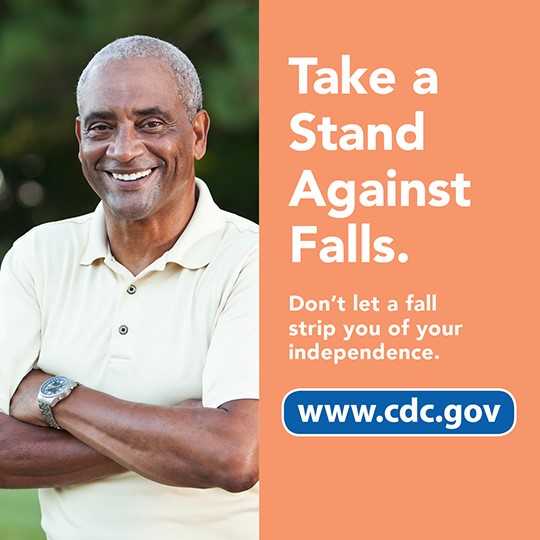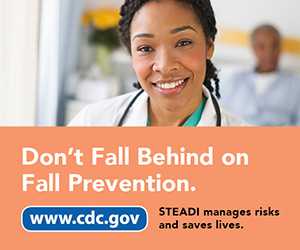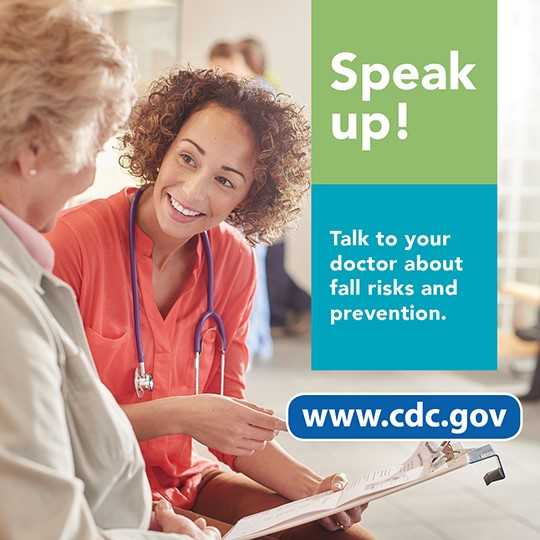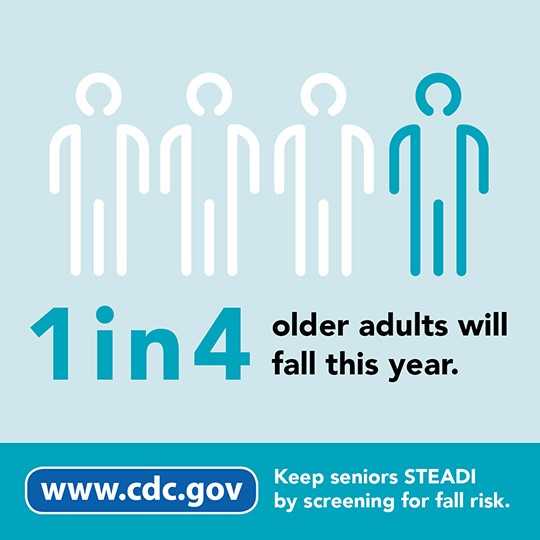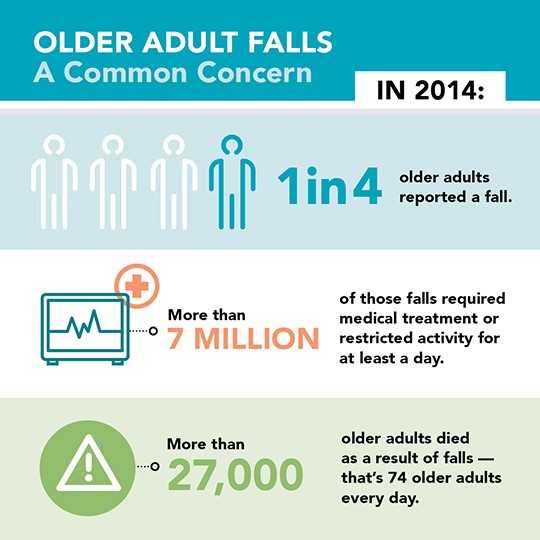Older Adult Fall Prevention
Falls threaten older adults’ independence and safety
Every second of every day in the United States an older adult falls. Among older Americans, falls are the number one cause of injuries and death from injury. In 2014 alone, 28.7% of Americans 65 and older fell, resulting in 29 million falls, causing seven million fall injuries and costing an estimated $31 billion in annual Medicare costs, according to a new report published by the Centers for Disease Control and Prevention in this week’s Morbidity and Mortality Weekly Report (MMWR). More than 27,000 older Americans died as a result of falls—that is 74 adults every day.
These new data come on Falls Prevention Awareness Day, which is dedicated to addressing the growing public health issue of falls, fall-related injuries and deaths, and promoting evidence-based prevention programs and strategies for prevention. To reduce older adult falls, CDC created the Stopping Elderly Accidents, Deaths, and Injuries (STEADI) initiative to help clinicians make fall prevention part of their clinical practice. STEADI provides
- Information on how to screen for falls
- Online training for providers
- Videos on how to conduct functional assessments
- Informational brochures for providers, patients and caregivers
Falls threaten older Americans’ independence and safety, and generate enormous economic and personal costs. More than 10,000 people in the U.S. turn 65 every day. As a result, the country will experience a growth in falls and fall injuries, resulting in a cost increase if preventive actions are not taken now.
CDC is working with healthcare providers to help keep older adults safe from falls. It all starts with three steps that healthcare providers can easily integrate into routine office visits.
At each visit, healthcare providers should:
- Ask patients if they have fallen in the last year, feel unsteady, or worry about falling.
- Review medications and stop, switch, or reduce the dose of any medications that increase the risk of falls.
- Recommend vitamin D supplements of at least 800 IU/day with calcium.
Older adults can also take steps to prevent a fall:
- Talk to their doctor about falls and fall prevention. It is important for patients to tell their doctor if they have fallen. Although one out of four older Americans falls each year, less than half tell their doctor.
- Participate in activities that can improve their balance and strengthen their legs.
- Have their eyes checked by an eye doctor once a year and update eyeglasses as needed.
- Make their home safer.
Falls are preventable and there are specific steps anyone can take to help safeguard older Americans so they stay healthy, active, and independent longer.
Contact Information
CDC Media Relations
(404) 639-3286
media@cdc.gov
Spokespersons
Grant Baldwin, PhD, MPH
“Falls threaten older Americans’ independence and safety, and generate enormous economic and personal costs that affect everyone. Together, everyone can reduce the risk of falling and prevent fall injuries.”
Grant Baldwin, PhD, MPH – Director of CDC’s Division of Unintentional Injury Prevention
Gwen Bergen, PhD, MS, MPH
“Falls impose a heavy burden on older adults, society, and our health system. Older adults can work with their healthcare team to prevent these falls to stay healthy and independent.”
Gwen Bergen, PhD, MS, MPH
Elizabeth Burns, MPH
“Falls may seem like an unavoidable part of aging, but they’re not. Actions taken today, by older adults and their healthcare providers, can reduce the risk of falling and keep older adults safe from devastating injuries or death.”
Elizabeth Burns, MPH
- Page last reviewed: September 22, 2016
- Page last updated: September 22, 2016
- Content source:



 ShareCompartir
ShareCompartir
